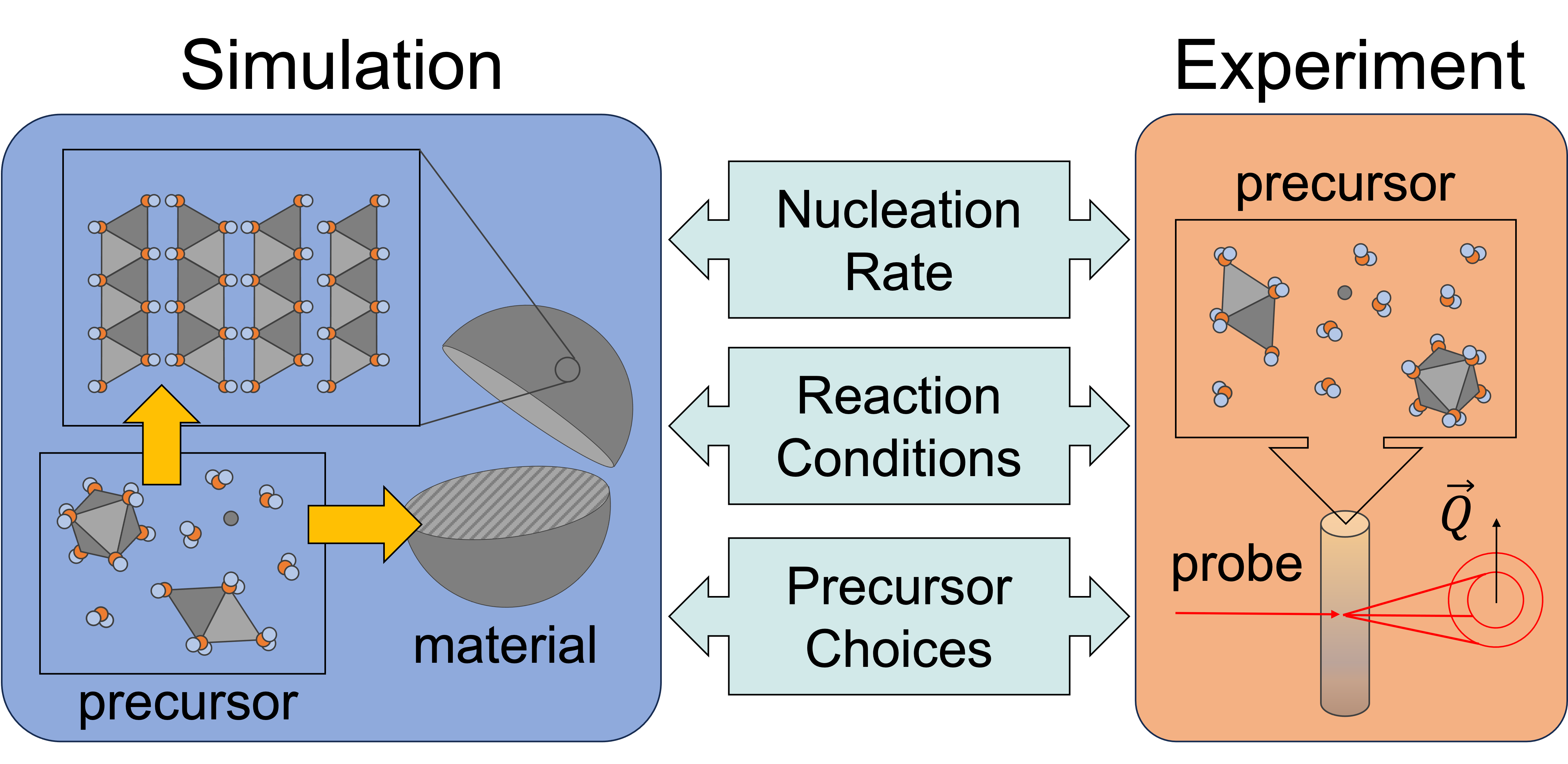2024 AIChE Annual Meeting
(4eu) Engineering Materials Scale-up Via Optical Metrology and AI-Augmented Simulation: From Batteries to Pharmaceuticals
Author
There are two speed limits to innovation: the rates of chemical reactions, and the rates at which researchers learn from experiments. Since global warming motivates a transition to carbon-free energy and transportation, and the worldwide manufacturing landscape is competitive, there is an urgent need for rapid improvement in both.
My research aims to understand and engineer phase transitions during the synthesis of materials by a first-of-its-kind combination of fast-timescale characterization and AI-augmented first-principles simulation. Current process metrology is too slow to characterize solid phase nucleation, observe intermediates, or identify transferable mechanisms.
For my first research projects, I will experimentally characterize nucleation and growth rates at temporal resolutions surpassing the state of the art by 103–106. This is achievable due to my expertise in ultrafast optics and use of national laboratory facilities. Simultaneously, advances in machine learning methods now enable computational predictions to match experiments and extract transferable mechanisms. Computationally, I will estimate nucleation rates and kinetic pathways for phase transitions within solution-based materials production. This combination of simulation and experiment proposed here draws on my past research experience with both (e.g., Nature, 2024).
Follow-on research will expand towards high-throughput characterization of phase transformations in synthesis and engineering new energy-efficient synthetic processes. This research will find broad applications from clean energy technologies to cement and small-molecule pharmaceuticals.
Project 1: understanding phase transformations in materials synthesis
This project will demonstrate fast-timescale probes of materials syntheses and simulations interpreting them. The model reactions of choice are the precipitation of solids from pairs of intermixing solutions, such as lithium-ion battery cathode precursors or cement precursors.
Existing process metrology relies on dynamic light scattering, whose time resolution is limited by needing to observe not only the size of particles, but their motion, over multiple seconds. Instead, I employ optical (infrared, Raman, terahertz) and x-ray scattering methods, which sidestep this limitation. These metrologies will be applied in scattering microscopy, to free-standing liquid jets, and in microfluidic flow cells. These methods characterize nucleation and growth rates resolved by control variables (e.g., temperature, solvent identities, counter-ions). The extraction of reaction rates and time-resolved metal speciation is the major milestone of this project.
The computational approach relies on machine-learning simulations based on quantum-mechanical accuracy training data. The use of recently demonstrated machine learning potentials enables modelling aqueous reactions involving water itself, such as the precipitation of a solid hydroxide (Figure 1, simulation). Crucially, previous research has not exploited this capacity due to the lack of experimental benchmarks, which this project generates (above).
The general problem of identifying phase transition pathways will be further studied with the use of generative artificial intelligence, for example to identify transition path ensembles. Overall, simulation will seek optimal reaction coordinates, fastest pathways, extraneous pathways, and kinetic rate limits. Understanding strongly irreversible chemical reactions with fast-timescale resolution will offer model systems for non-equilibrium statistical mechanics and enable fundamental insights into the limiting rates of chemical reactions along collective reaction coordinates. For example, studies of fast precipitation will characterize friction along reaction coordinates.
Project 2: engineering materials synthesis
Methods developed in Project 1 will be applied to engineer new, rapid, and energy-efficient syntheses. Again, model systems will be battery cathode materials, with the goal of decreasing their costs and environmental footprints. To start, high-temperature precipitation will be simulated and probed, for example, to producing trivalent metal oxyhydroxides, viz. NiOOH, instead of the divalent hydroxides Ni(OH)2. Increasing the metal oxidation state from +2 to +3 eliminates the need for redox reactions during the post-precipitation calcination and duration by switching to a topotactic structure-preserving lithium insertion and thus reduce calcination temperature. To do so, supercritical fluid processes will be studied and engineered.
The goal of Project 2 will be to accelerate methods from Project 1 and rapidly screen reaction conditions. Experimentally, this project will develop automation of optical spectroscopies on free-standing liquid jets and optical microscopies. Computationally, this project will leverage reaction networks and generative artificial intelligence.
Project 3: understanding small-molecule crystallization
The same methodologies as in Project 1 will be applied to understand the crystallization of molecular crystals at high driving forces. At first, I will use archetypal model molecules, such as glycine, which mimic the challenges of crystallising select active polymorphs of active pharmaceutical ingredients (APIs). Low-risk polymorph-sensitive table-top fingerprinting spectroscopies are terahertz absorption and Raman scattering. The same flow cells and free-standing liquid jets as in project 1 are suitable for this purpose. Diffraction probes will be attempted via high-energy high-energy electron diffraction (UED) at national lab facilities, which is ideally suited to characterizing light elements (here, carbon).
Characterizing the nucleation and growth rates for competing polymorphs of molecular crystals will be the key experimental milestone of Project 3. The computational milestones, to be achieved with the same method as for WP1, will be the prediction of conditions that can yield each polymorph.
Teaching Interests
At Oxford, I have delivered the second-year undergraduate statistical mechanics lecture series. I augmented my lectures with quizzes and discussion to break up their pace and included examples from information thermodynamics and recent research. My teaching philosophy and methods draw on my research and experiences with human-centered design. I can contribute to chemical engineering curricula by offering core courses such as thermodynamics, statistical mechanics, solid-state and materials chemistry, introductions to energy storage and engineering, or phase transformations. Possible advanced topics include energy conversion devices and applications in inorganic and solid-state chemistry. For masters-level and graduate students, I would be delighted to teach non-equilibrium statistical mechanics and in-depth topics in statistical mechanics, or computational and artificial-intelligence methods. I expect to further include aspects of atomistic simulations and the use of artificial intelligence in my future lectures. I am uniquely prepared to contribute to project-based courses combining experimental and computational problem-solving, design, and applications, such as an engineering capstone.
